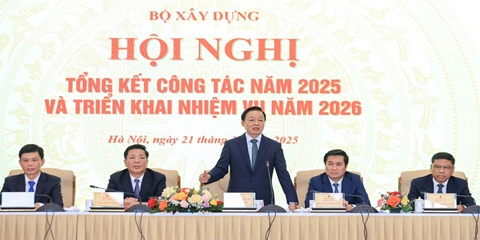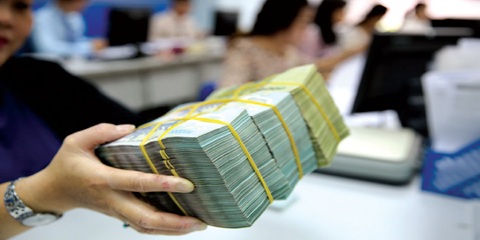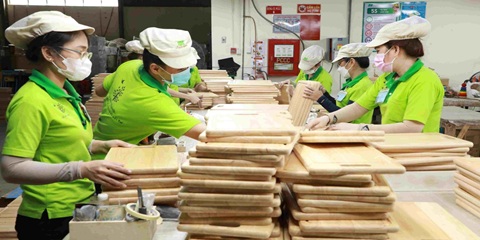Want to be in the loop?
subscribe to
our notification
Business News
APPAREL EXPORT TARGET SEEN UNOBTAINABLE IN 2016
Again, the growth was mainly driven by foreign direct investment (FDI) firms while domestic peers struggled to find new orders in the period.
VITAS forecast finding new orders would continue to be tough and that some small and medium enterprises could be forced out of business. If the situation does not improve, the industry would find it hard to obtain outbound sales of US$29 billion this year.
Giang said Vietnamese enterprises are not as competitive as exporters from other parts of Asia.
Cambodia and Bangladesh enjoy tariff incentives offered by the U.S and Europe while wages in Myanmar, Bangladesh, and Sri Lanka are lower than in Vietnam. Recently, China has also lowered social insurance premiums from 20% to 18% in the context that many of its textile and garment companies have been shuttered.
There are signs of buyers shifting their orders from Vietnam to other countries to benefit from lower costs, Giang said.
Global economic woes are presenting an extra headwind to the industry. Particularly, many UK textile and garment enterprises operating in Vietnam have plans to shut down following the Brexit vote to leave the European Union last month.
Speaking at the press conference, VITAS vice chairman Nguyen Xuan Duong pointed out three main negative factors for the local textile and garment industry.
First, Vietnam’s foreign exchange policy has kept the Vietnamese dong currency stable compared with the U.S. dollar while the currencies of major markets such as the EU, Japan and China have fallen by 8-18% against the greenback. At the same time, ASEAN countries, India, and Bangladesh have seen their currencies down by 10-20%.
The annual region-based minimum wage raise has also sent production costs of local textile and garment firms up and undermined the competitiveness of Vietnamese garments.
Besides, lending rates of 8-10%, two to three times higher than in other countries that are Vietnam’s apparel export rivals, have placed another financial burden on local companies. As a result, prices of Vietnamese textiles and garments are 20-30% higher than in other countries.
Source: The Saigon Times
Related News

A STELLAR CHRISTMAS AT SOFITEL SAIGON PLAZA
Experience the magic of year-end celebrations in five-star luxury, where Parisian elegance meets Saigon’s festive vibrancy. Discover your Stellar Christmas moments: https://sofitel-saigon-plaza.com/festive-offer-2025

CONSTRUCTION SECTOR POSTS OVER 9% GROWTH IN 2025
Industries under the ministry’s management accounted for an estimated 17.23% of national gross domestic product (GDP), up about 0.17 percentage point from 2024. They contributed around 1.96 percentage points to overall GDP growth, reported the Vietnam News Agency. The contribution helped push Vietnam’s economic growth to above 8% in 2025 and supports the Government’s aim of pursuing double-digit growth in the coming years.

VIETNAM PUTS PUBLIC INVESTMENT DISBURSEMENTS AT VND603.6 TRILLION
Vietnam’s public investment disbursements had amounted to VND603.6 trillion in the year to December 18, equivalent to 66.1% of the plan assigned by the prime minister. According to the Ministry of Finance, actual disbursements by December 11 had totaled VND577.7 trillion, or 63.3% of the prime minister-approved plan of VND913.2 trillion, the Vietnam News Agency reported.

SHINE INTO 2026 AT HOIANA RESORT & GOLF!
This New Year’s Eve, celebrate where the sea meets the sky. Vibrant performances, festive dining, DJ beats, live bands and dazzling fireworks come together for one unforgettable night. From beachfront countdown moments to curated New Year’s Eve dinners across Hoiana, every detail is designed to welcome 2026 in style.

VIETNAM’S TRADE SET TO SURPASS US$900 BILLION FOR FIRST TIME
Vietnam’s total import-export turnover is expected to reach about US$920 billion by the end of the year, marking the first time the country’s trade value has exceeded the US$900-billion mark. As of December 15, Vietnam’s total trade turnover stood at US$883.7 billion, according to the Agency of Foreign Trade under the Ministry of Industry and Trade.

GLOBAL SOURCING FAIR VIETNAM 2026 – THE TRULY GLOBAL B2B SOURCING SHOW IN VIETNAM TO EXPAND & DIVERSIFY YOUR EXPORT MARKETS WORLDWIDE
The 4th edition of Global Sourcing Fair Vietnam returns in 2026 with an impressive scale, featuring 700 booths showcasing Fashion & Accessories, Home & Gifts, and the newly introduced Printing & Packaging Products from 500+ verified suppliers across Vietnam and Asia – including Mainland China, Taiwan, Hong Kong SAR, South Korea, India, Bangladesh, ASEAN, and more.
























